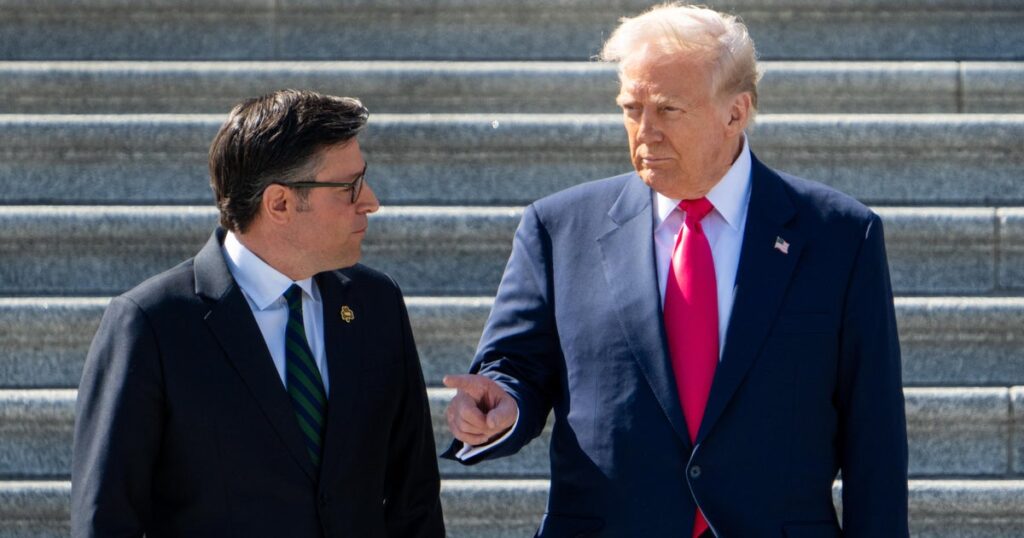Washington — The White House is expected to send Congress a rescissions package in the coming days, looking to claw back congressionally approved funding amid a broader effort to dramatically slash spending.
As the administration faces legal challenges to its efforts to slash the U.S. Agency for International Development, public service broadcasting and other programs, the White House is looking to Congress to formalize the process and put it on a stronger legal footing.
Here’s what to know about rescission:
What is the rescission process?
The rescission process is a way for Congress to cancel funds it previously appropriated but that the federal government has not yet spent, rendering the funds no longer available to departments, agencies and offices. Those funds can then be redirected elsewhere or sent to the Treasury general fund.
Congress has the power of the purse under the U.S. Constitution, and each year, lawmakers approve funding to keep the federal government running. Those funds are then dispersed throughout government agencies and programs. The president can temporarily defer funds, or withhold them altogether — but only with Congress’ approval.
The distinction was made under the Congressional Budget and Impoundment Control Act of 1974, which established a mechanism for clawing back funding and was intended to stop presidents from unilaterally freezing previously appropriated funds. The law requires the president to ask Congress to rescind spending legislation in most cases.
Only discretionary funds can be rescinded. Mandatory spending, like Social Security and Medicare, cannot be.
How does the rescissions process work?
To kickstart the rescission process, the White House’s Office of Management and Budget submits a formal rescission request to relevant committees in Congress, and the panels have 25 days to act on the package. It would then go to the House and Senate floors for expedited votes.
Overall, Congress has 45 days to act on the rescission request. And rescission bills are not subject to the 60-vote threshold needed to advance most legislation in the Senate. Instead, they only require a simple majority to pass.
What leaders in Congress have said about a rescissions package
Congressional Republicans are generally optimistic about the process — and eager to get started.
“I’m anxiously awaiting a rescissions package,” House Speaker Mike Johnson said at a recent Axios event.
Johnson said it’s his expectation that Congress will pass a rescissions package for fiscal year 2025. And asked about going back in 2026, Johnson said “I’ll go back as many times as the president will send us a rescissions package.”
“We have to reduce spending. I mean, it should even be a partisan proposition — it’s something every American has to support,” Johnson said.
Asked by reporters about the timing of the package, Senate Majority Whip John Barrasso said on May 6 that he had not heard from the White House on when a rescission request would be transmitted, though he said the White House had previously outlined what could be in it.
“There’s a lot of wasteful Washington spending, and people at home want to make sure we get rid of it,” Barrasso said. “A rescissions package is one way to deal with some of it.”
What’s expected to be targeted within an initial rescission package
The White House package is expected to ask Congress to cancel around $9 billion, seeking to make permanent some of the spending that Elon Musk and Mr. Trump’s Department of Government Efficiency have slashed in recent months.
The recission package would likely be only a fraction of the cuts, with an expected focus on foreign aid money from the U.S. Agency for International Development, or USAID, along with funding for major public broadcasting systems, including NPR and PBS. But the final product remains to be seen, and could pose hurdles for passage in narrowly held Republican majorities in the House and Senate.
Sen. Jim Banks, an Indiana Republican, said on Fox News in May that Musk and DOGE did the “hard part” by identifying the “wasteful spending.”
“Now Congress has to do the easy part and claw that back and make those cuts permanent,” Banks said.
Banks called the initial rescission package “really simple,” while saying that he’s “getting frustrated” because of a lack of urgency around the package.
“This is just the first $9 billion — if we can’t cut $9 billion, how are we going to cut $150 billion?” Banks said.
When have rescissions been approved before?
Rescission has frequently been used in Congress to reallocate unspent funds. But requests from the White House come less frequently.
Since 1974, presidents have proposed nearly $92 billion in cuts through rescission packages, of which nearly $25 billion were accepted by Congress, according to the Government Accountability Office.
Congress approved $1.2 billion in cuts proposed by President Gerald Ford, $2.1 billion by President Jimmy Carter, $15.6 billion by President Ronald Reagan, $2.3 billion by President George H. W. Bush and $3.6 billion by President Bill Clinton. Neither former Presidents George W. Bush nor former President Barack Obama utilized rescission packages.
During Mr. Trump’s first administration, the Senate rejected a rescission package sent by the White House requesting nearly $15 billion in cuts.
https://www.cbsnews.com/news/what-is-rescission-process-congress-trump-doge/


